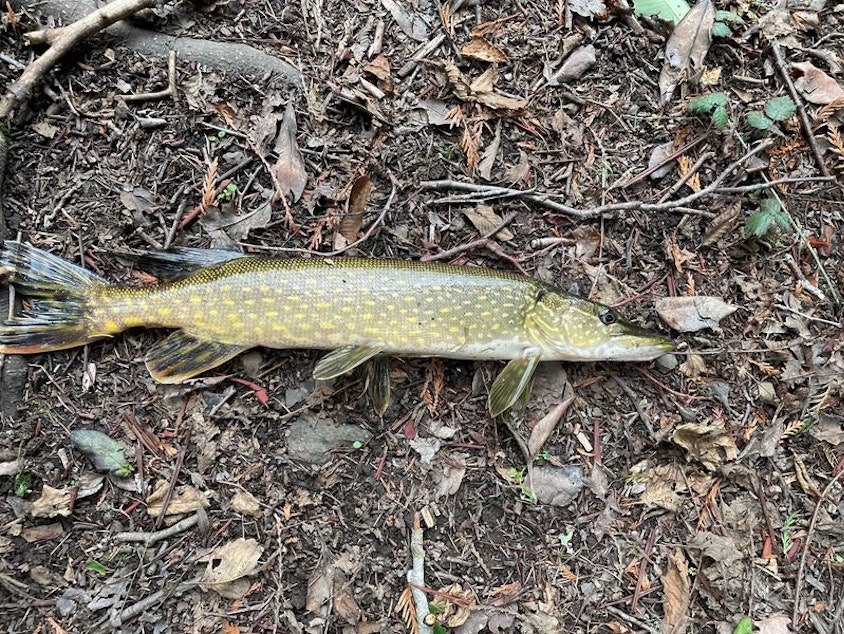An invasive species, on San Juan Island?

Officials with the Washington Department of Fish and Wildlife say that an invasive species was "almost certainly" placed in local waters in violation of state law.
An invasive northern pike was fished out of a pond at Limekiln Preserve on San Juan Island in late February. According to a press release, it was caught by a local teenager who passed photos of the pike to local officials and the Washington Department of Fish and Wildlife.
RELATED: Washington watching for invasive species as it gets closer in Idaho
"WDFW is working with the Land Bank, county, and partners to deploy a rapid response to assess how many pike are in the area, and to remove them as soon as possible before they can spread to other waterways," the department said in a statement.
The San Juan County Conservation Land Bank reports that a skiff has been placed on the pond, where officials will be deploying gill nets. The WDFW says the fish is a threat to amphibians, birds, mammals, and other wildlife in the region.
The pike sighting on San Juan Island comes as WDFW has a draft plan under review, aiming to coordinate efforts to combat the invasive species.
“This plan is important to conservation in our state as it maps out the response of WDFW and coordinating partners to a number of situations that could arise with the spread of northern pike,” said Justin Bush, aquatic invasive species policy coordinator with WDFW, in a statement. “It will help to speed our response when timing is critical as partnering agencies and groups will already know their role and be prepared to respond.”
WDFW Eastern Region Fish Program Manager Chris Donley further notes that northern pike is likely to expand into waters across Washington state. They can live up to 20 years and produce a lot of young.
“Preventative work done now will help to minimize the environmental, economic, and cultural resource impacts of northern pike later," Donley said.
For a few years, state wildlife officials have been on guard for the northern pike in local waters. The fish is native to the Midwest, Canada, and parts of Alaska, but over the past decades, anglers have been known to transport the fish to non-native waters. That way, they can fish locally for them. The pike, however, can wreak havoc on local fish and wildlife populations. Washington bans any transport of pike into local waters.
Sponsored
"The pike [on San Juan Island] was almost certainly introduced in violation of state laws concerning prohibited species which ban their transport, sale, or introduction into state waters," WDFW said in its statement. "Violators face a maximum penalty of one year in jail and $5,000 in fines."
These fish are known for their sharp teeth and aggressive character. That means they threaten other fish species in the region, particularly Washington's beloved salmon.
RELATED: Can’t we just eat those invasive crabs until they’re gone? (Probably not)
Northern pike have shown up in Washington's lakes and rivers in recent years, prompting anxiety among wildlife officials and local tribes. There are northern pike in the Columbia River, which are currently trapped behind the Grand Coulee Dam. The fear is that these fish will make it past the damn and threaten salmon down stream.
If you come across an invasive species yourself, WDFW asks that you report it as soon as possible.





